GMM
An alternative way to escape climate disaster.
This design speculates a future affected by climate change, where everyday migrants and refugees face racial profiling and discrimination, directly affecting their ability to migrate. It is a design that critiques society's behaviours, rather than try and improve an element of humanity.
In brief, GMM is a site for migrants to apply for black-market migration. They must disclose their personal details for the site to determine their ability to migrate. Appealing migrants will have access to low-risk, low-cost methods like forged visas, whereas questionable individuals must choose from high-risk, high-cost methods like container smuggling.
My Role
I was heavily involved in researching the effects of climate change on migration, as well as developing the logic and context behind how this system would work in such a fictional world (it was very eye-opening to discover that climate change had helped exacerbate the Syrian Crisis).
I also developed the user journey in using the product, and coded the website that simulated the conditions and attributes this fictional corporation would have considered for the migrants.
Design Problem and Research
We needed to uncover a consequence of our current (perhaps, lacklustre) response to climate change that would really impact the audience viewing the project. The concept of climate change migrants and refugees appealed to us the most because climate change is rarely seen as a motivating factor for mass migration.
“No one is saying ‘I’d better pack my stuff and go to Europe because I expect CO2 emissions to rise,’”
Michael Werz, Center for American Progress
This is because these conclusions seem too distant to the immediate surface problem. Climate change migrants are only starting to become recognised in the legal definition of a refugee, but more work needs to be done in protecting these people.
Insight
Our search for a specfic topic began with the practical concepts that affected humans, such as water and food availability, and the increase in health problems. As I researched deeper, one thing led to another:
“There are several theories... When agricultural conditions worsen and people move to cities, pressure on urban resources creates tension. Another [theory] has to do with social and economic inequality... rainfall patterns could predict when landless farmers would invade wealthy landowners’ turf. Other theories look at individual psychology, and whether climatic shock may influence a person’s level of aggression or ability to make decisions.”
Sydney Brownstone, Fast Company
It was fascinating to find that water shortages and straining of local resources could result in conflict and eventual migration, and that climate change had a part in it.
Ideation and Iteration
Our team went through many, many potential designs before settling on one. We wanted to have a design that provided the immediacy of your actions that climate change couldn't provide, and in a personal way. Though we were set on the idea of climate refugees, we spent a lot of time exploring different physical artifacts to deliver our message.
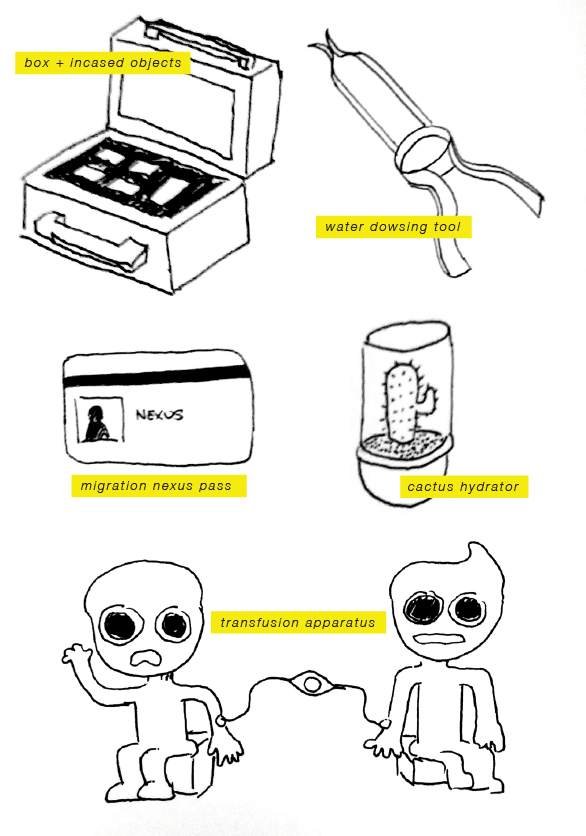
A set of "essentials" needed to migrate to a better climate, such as tools for navigation, hydration, cultivation, and access. This iteration would be able to convey the intense desperation and disregard for climate science (water dowsing is a pseudoscience); however, it lacked depth in terms of describing the personal impact migration can have on an individual. The items were surface-level exaggerations of the human condition, and in hindsight, seemed to be an assorted array of other speculative designs.
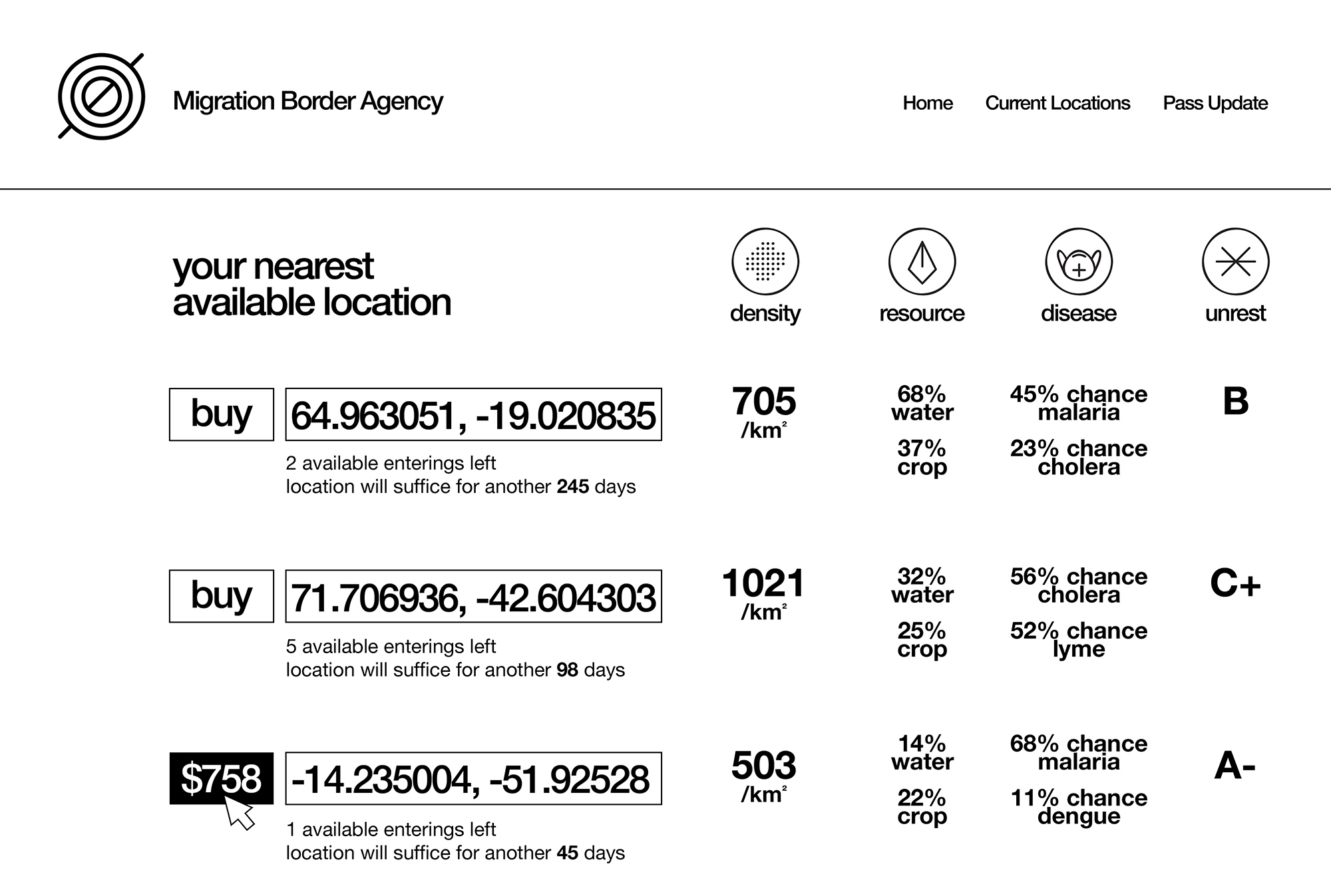
A refocus led to the creation of a border agency that helped people find locations. This design afforded a description of the world, but it leaned towards affirmative design, lacking criticality as it merely established a universe.
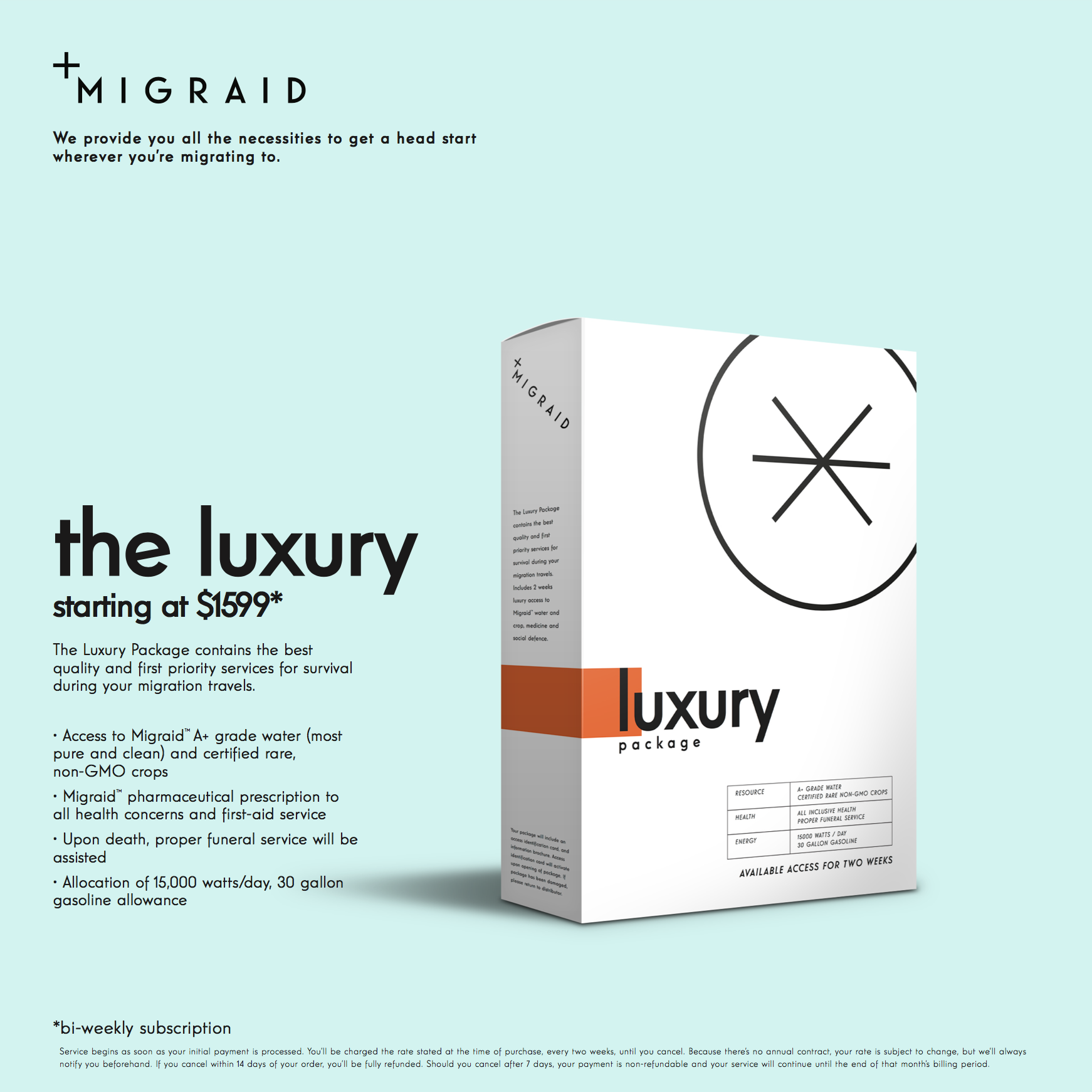
The agency was a solid concept but we redirected our attention towards the physical needs an environmental migrant would use. I was fond of the idea of privilege and restricted access, so this package would require identifcation in order to be used. As before, our messaging only described the superficial needs of this world. The divergence of our idea caused us to reset our thinking, leading to the final product iteration.
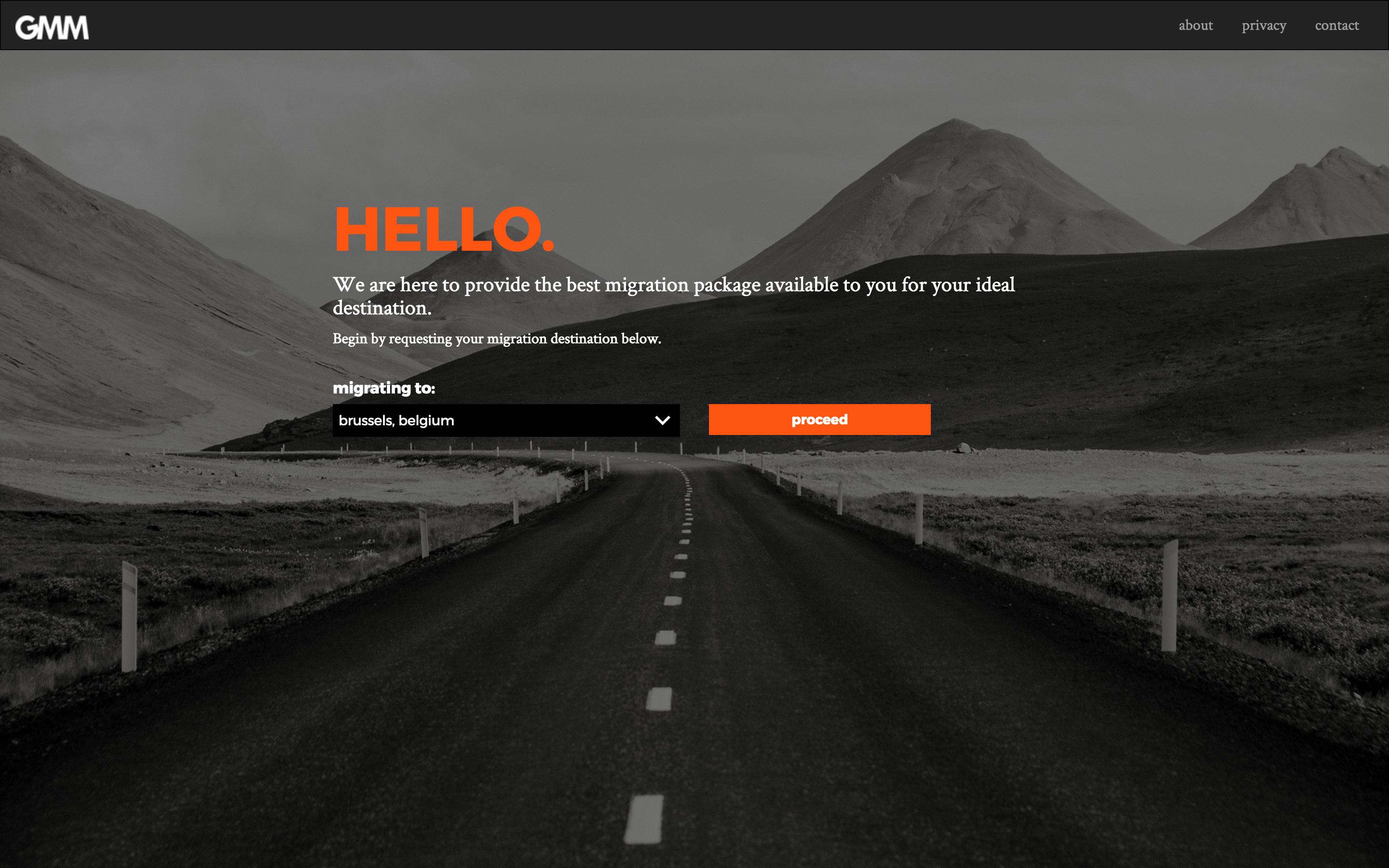
We discovered there was a place for opportunism in the midst of crisis: that is, a black market for access to safer locations, at a high price. To punctuate our design, we used discrimination as a deciding factor for the ability to migrate.
Migration to safe havens stresses out local resources. Limited resources causes tension. Tension causes fear. Fear clouds rational judgement, and in order to protect their livelihood, begins to restrict and judge people for how they look, where they live, how rich they are—This was the state of mind we were seeking that would connect climate change with migration for the viewer.
Experience Tour
In this climate-changed world, legal migration is heavily restricted due to harsh conditions and limited resources. Our design intends to guide a potential migrant (which can be the viewer) through the black market migration process. In order to make the impact more personal, we used real locations, conditions, and categories that would be profiled or judged out of fear by others.
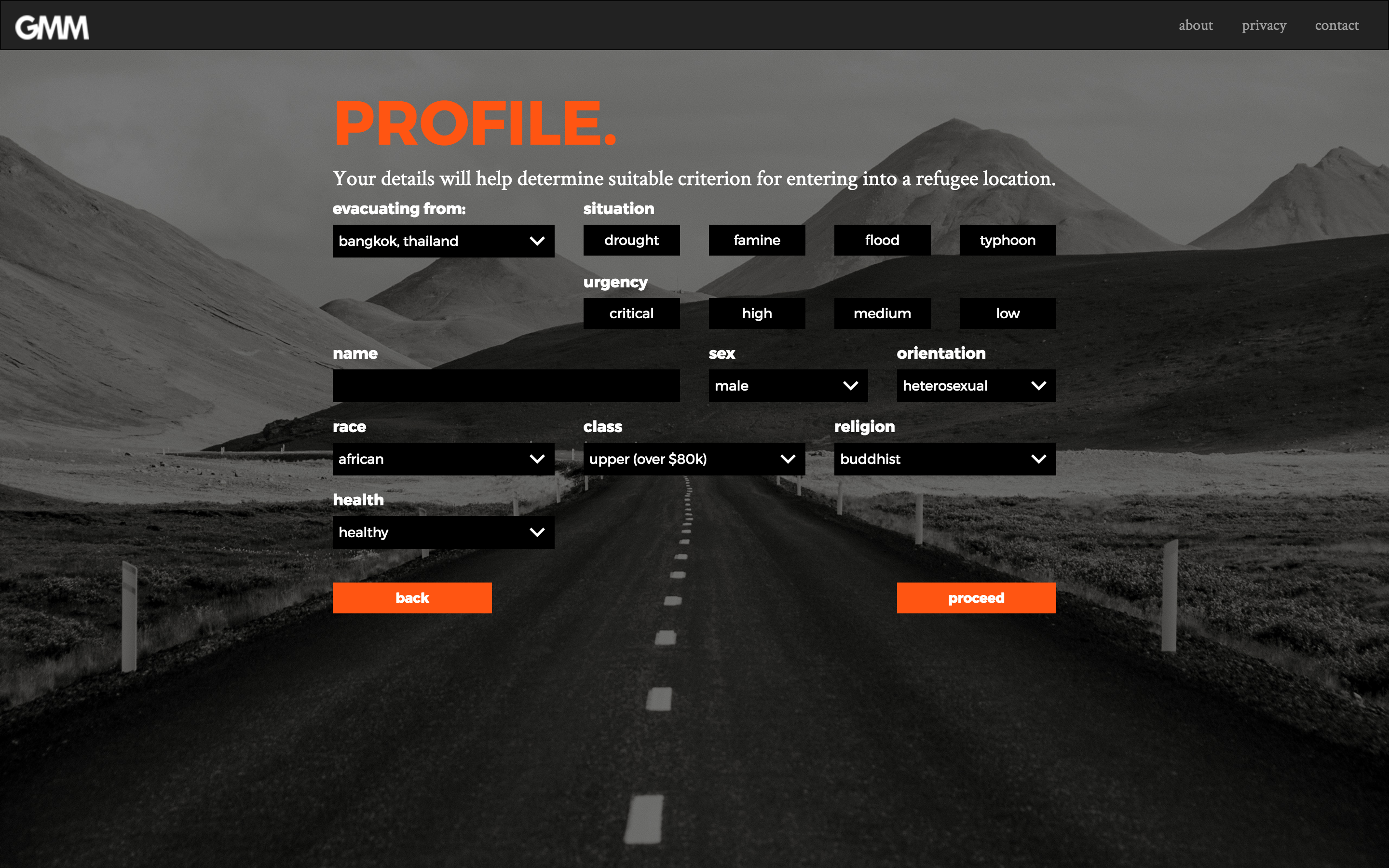
The digital prototype provides a form for which migrants can select a destination, and disclose their information for the selection process. As the visitor progresses, they might begin to realize that their traits are being judged by the platform.
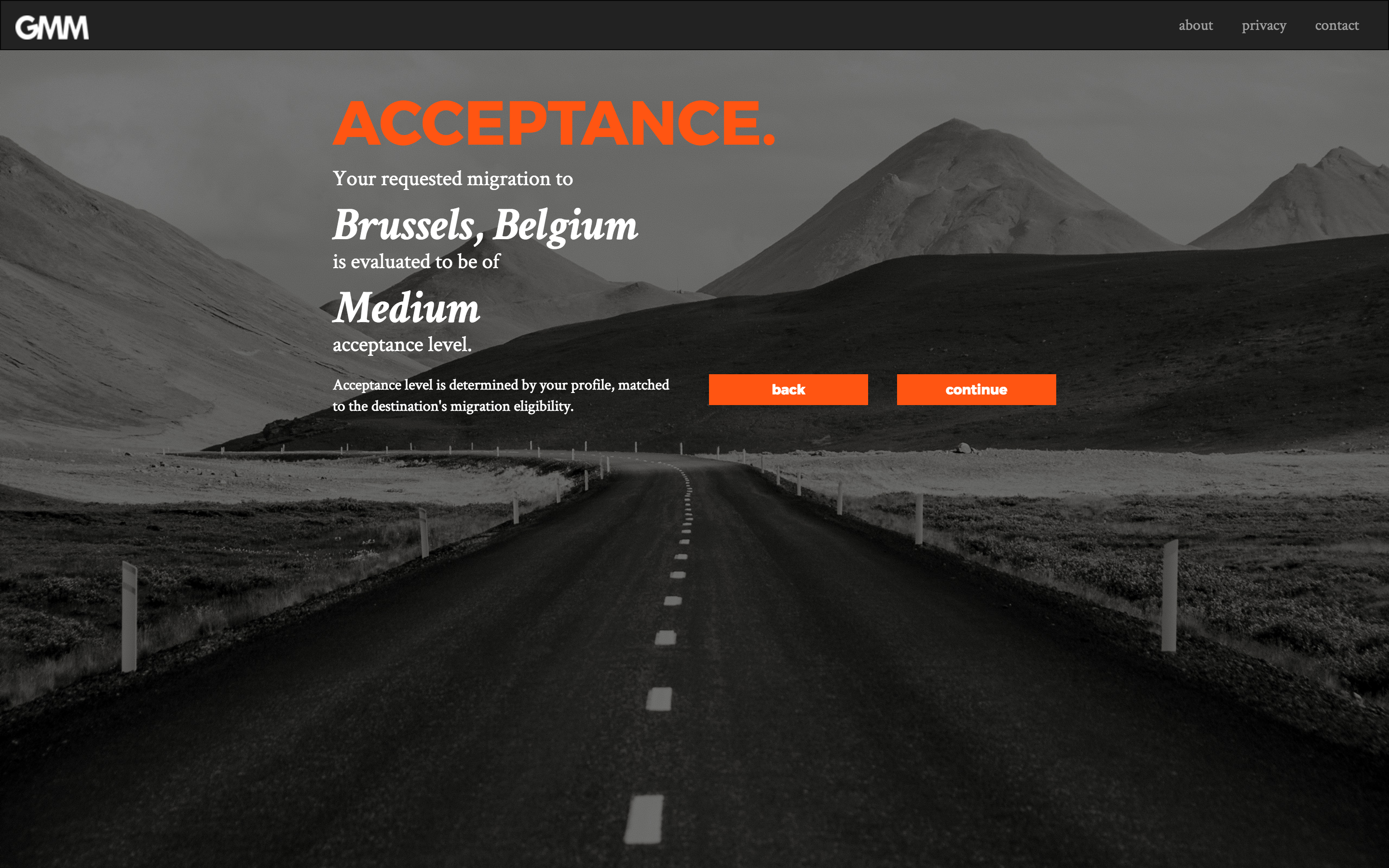
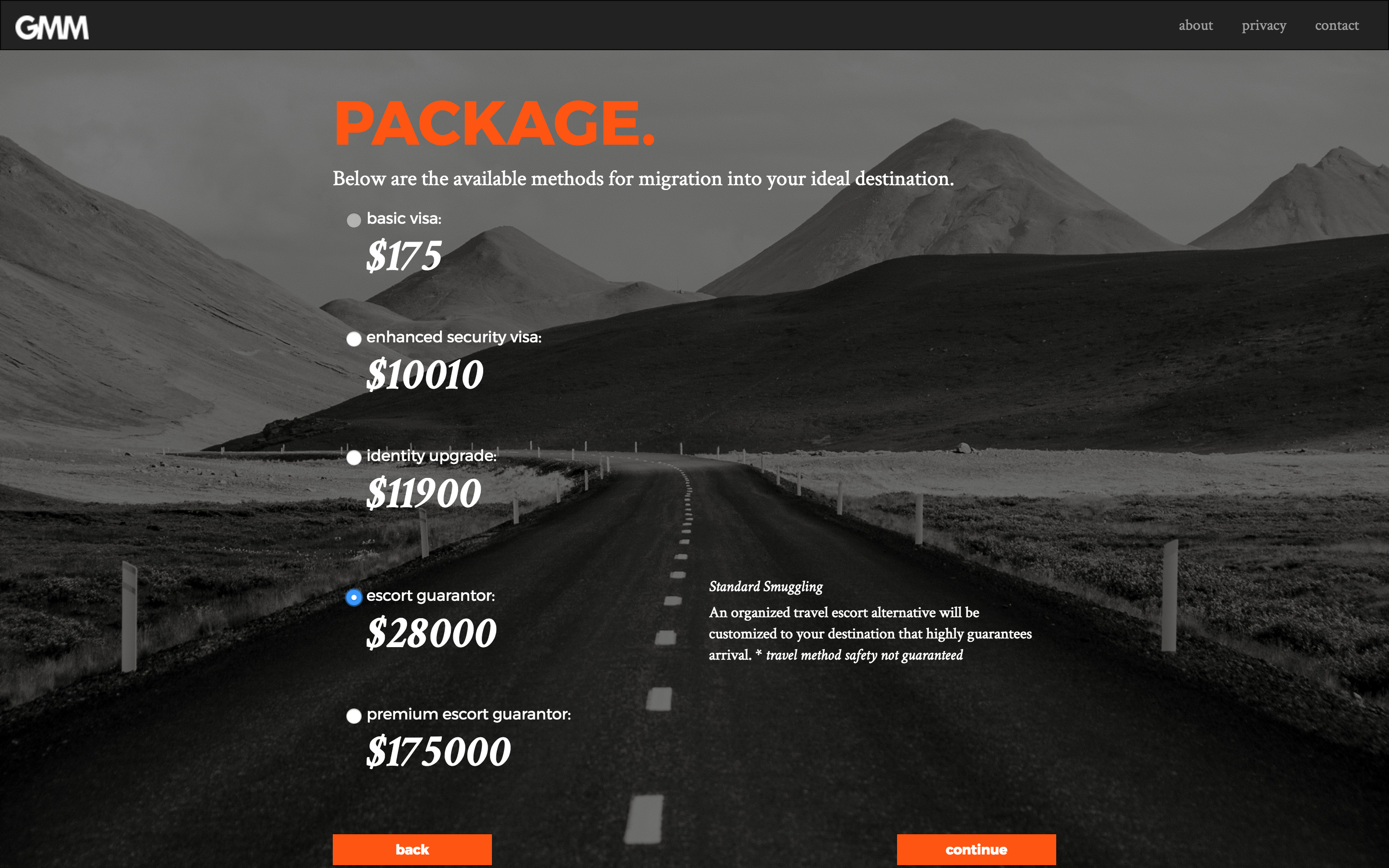
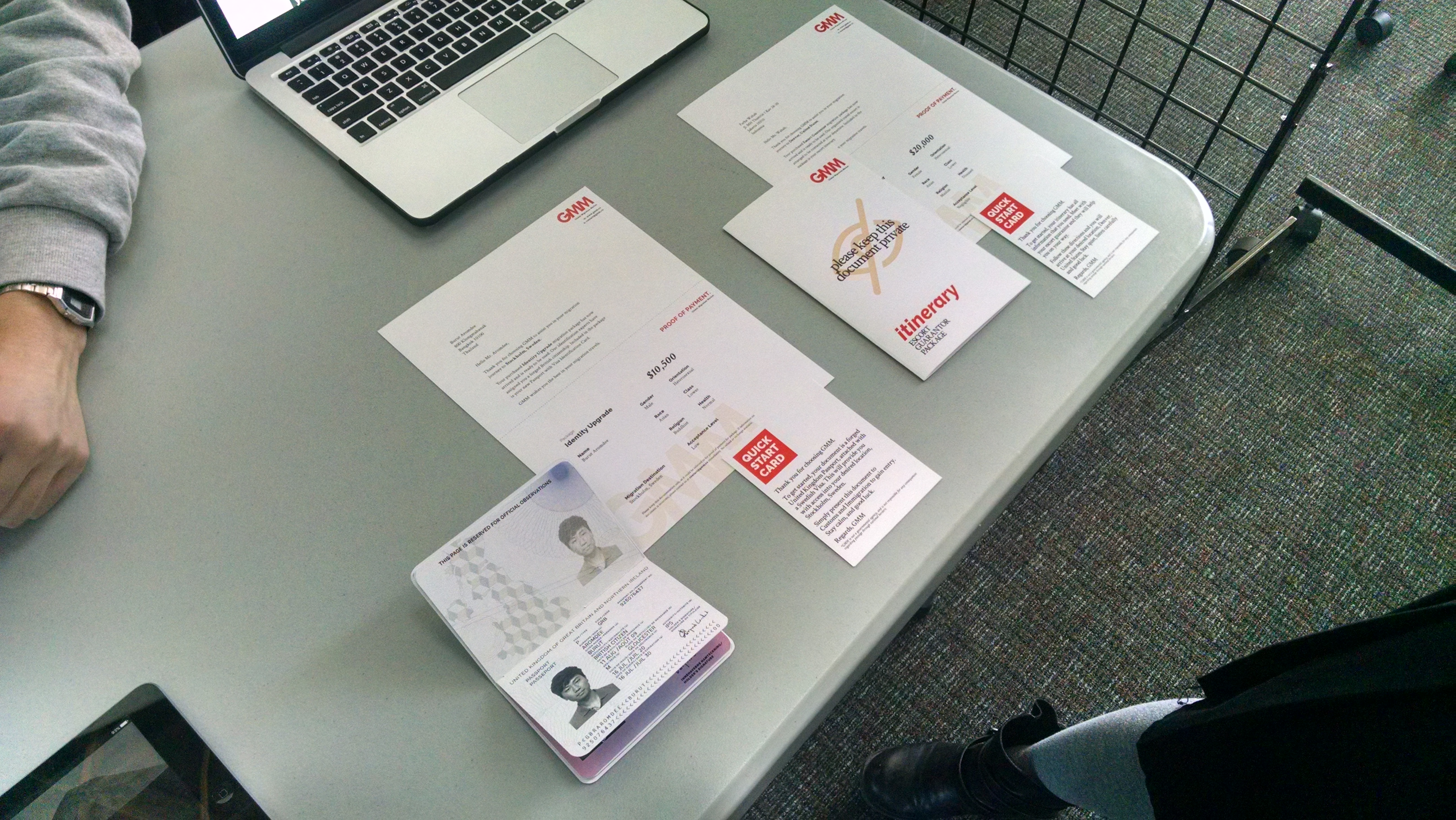
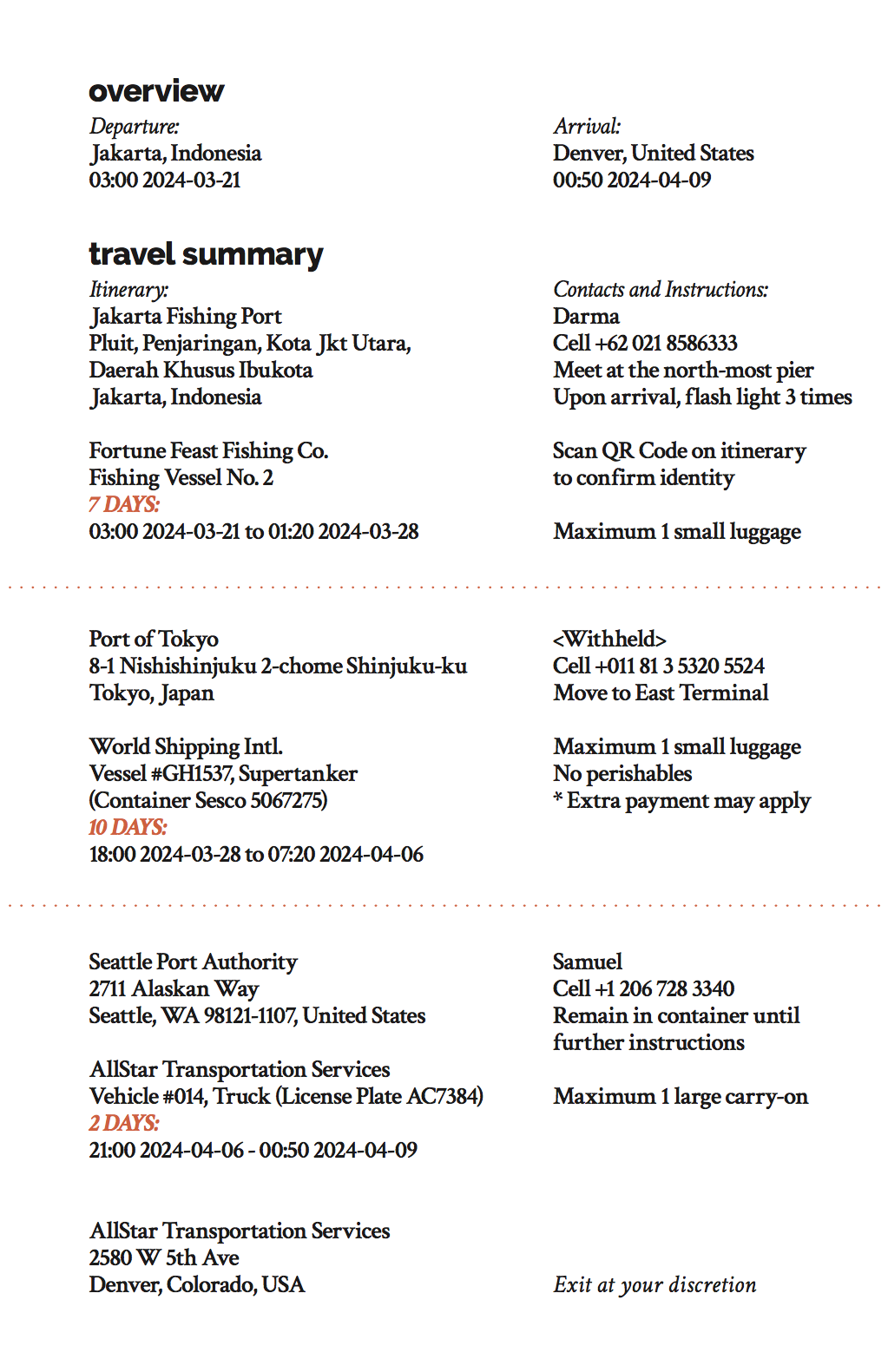
Outcome
We were able to express our core message through the design itself whilst allowing the viewer to think deeper about the nuances of migration and climate change. Despite the exploration and loss of focus early on, we were able to realize what message we needed to give. As a result, we did not have time to identify the most impactful traits, as well as create truly evidence-based calculations for the acceptance levels. We would have also created a more interactive and thoroughly designed piece for a more engaged audience. Through all the iterations we went through, we learned that the importance of having a focused message precedes whatever design we make.
